Did you know that Australia and New Zealand have among the highest prevalence of allergic disorders in the developed world?
1 in 5 of us will experience a chronic allergy or allergic reaction at some point in our lives. Despite this, there is often a lack of appreciation for the extent to which allergic reactions impact a person’s quality of life, in addition to the economic impact on both society as well as the individual.
What types of allergies are we talking about? Pretty much all kinds. From hay fever, asthma and eczema, through to food, insect bite and drug allergies. It is both children and adults alike who suffer.
What is an Allergy?
Allergies occur when a person’s immune system mounts an abnormal response to substances in the environment (allergens) that do not normally bother other people. Allergens are found in dust mites, pets, pollen, insects, ticks, moulds, foods and some medicines.
In Australia, the most common allergens are: dust mites; pollen; foods such as cow’s milk, peanuts, soy and shellfish; animal fur; insect bites/stings; moulds and medicines.
Areas of the body that may be affected by an allergic reaction are typically the eyes, nose, sinus and throat; chest and lungs; stomach and bowel; and skin.
We all know that the regular discomfort to those suffering from allergies (whether it is ourselves or loved ones) impacts strongly on quality of life. But the effects also spread far and wide into a country’s economy through lower productivity while at work; lower employment rates; absenteeism and lost household productivity; health system expenditure; plus other indirect costs such as aids and home modifications and the bring-forward of funeral costs. (Report on the economic impact of allergic disease.)
With this in mind, although we cannot offer a cure for all allergies, it is some comfort to know that there are things we can do within our day to day lives to alleviate our own discomfort from allergic reactions, many of which are natural remedies. In this post we will focus on two types of allergies in particular: skin allergies and seasonal allergies (such as hay fever).
Natural Remedies for Skin Allergies
A skin allergy can present itself as itching, redness, swelling, a burning sensation, raised bumps, skin cracking and skin flaking. Symptoms can be caused by medications, preservatives, fragrances, chemicals, latex, nickel, plants and illness, though this is by no means an exhaustive list. Here are some natural skin allergy treatments that may help calm down your symptoms.
Oats
Oats can be used in a couple of ways to soothe the itch of an allergic reaction.
Oatmeal bath: Add 1 cup of powdered oats to a lukewarm bath and mix thoroughly. Fully immerse yourself for about 30 minutes and then rinse under a cool, gentle shower.
Oatmeal Poultice: In a mixing bowl, slowly add distilled water, 1 teaspoon at a time, to 1/4 cup of powdered oats. Keep adding water until a smooth, spreadable paste has been made. Apply this paste to your affected area of skin and bandage with a moistened cloth. Leave the bandage on for approx. 30 minutes then remove and rinse the skin with cool water. Finish by moisturising the area with your preferred moisturiser.
Baking Soda
Baking soda can be used to adjust the skin’s pH balance and works as an anti-inflammatory.
Baking Soda Paste: Mix 4 tablespoons of baking soda with 12 tablespoons of distilled water until a paste is formed. Apply this paste to the itchy area and gently rinse away with cool water after 10 minutes. If you prefer, coconut oil can be used instead of water to create the paste.
Baking Soda Bath: Add 1 cup of baking soda to a lukewarm bath and mix through thoroughly. Fully immerse your body for approximately 15 minutes, then rinse under a gentle, lukewarm shower.
Ice Cubes
A simple remedy for relieving itchy and inflamed skin. Applying a cold compress of a few ice cubes in a plastic bag to the affected area can work wonders. Repeat 3 to 4 times a day for regular relief. A cotton handkerchief dipped in ice cold water can also work a treat.[/vc_column_text][divider line_type=”No Line” custom_height=”20″]
Olive Oil
Olive oil, a natural moisturiser, is also rich in anti-oxidants and vitamin E, promoting skin healing and renewal.
Olive Oil Skin Calming Moisturiser: In a bowl, mix olive oil and pure raw honey (preferably local) to form a loose paste. Apply this directly to affected skin areas to relieve itching.
Aloe Vera
Most of us are familiar with the soothing qualities of aloe vera. It has anti-fungal, anti-bacterial and anti-inflammatory properties that through regular application can promote the healing and calming for the redness of a rash.
How to Use Fresh Aloe Vera: It’s so easy! Extract fresh aloe vera gel from the leaves of the plant and spread it directly onto the affected area of your skin. The gel can be left on your skin for up to 30 minutes, and then washed off using plain water. Repeat three times a day to manage skin allergies and keep them at bay.
Other Plants
There are some other less common plant varieties that have been shown in studies to treat skin allergies. These include Rumex japonicus Houtt (2006 study) as an alternative therapy for atopic dermatitis (eczema); Persimmon leaf extract (2002 study) for prevention and healing of atopic dermatitis; Konjac ceramide (2006 study) for improving skin conditions and reducing allergic responses in children with atopic dermatitis
A Top Tip for Many Allergy Sufferers
Sensitive Skin Dry-Cleaning is a gentle, earth and skin friendly dry-cleaning option that cleans your clothes without using nasty chemicals that may aggravate allergies.
Sensitive Skin Dry-Cleaning uses Sensene – an inherently biodegradable modified alcohol solution – that has low aquatic toxicity and no smell, keeping sensitive skin happy, and making clothes softer too!
Available exclusively at elaundry.
Natural Remedies for Seasonal Allergies
Seasonal allergies (such as hay fever) affect at least one in five Australians. Symptoms can present themselves as itchy eyes and nose, watery/running eyes and nose, excessive sneezing, fatigue, asthma attacks and even digestive upset. Triggers of these symptoms include grass and tree pollen, animal dander, dust mite fecal particles and air pollution.
Wash your Nostrils
A daily wash of your nostrils can wash away pollen and prevent much of an offending allergen from entering your airways. One option is to use a Saline (Nasal) Spray, or else a Neti Pot may also be used. If you’ve not heard of a Neti Pot before, it is a container designed to rinse debris or mucus from your nasal cavity, which you fill with a sterile saline solution. You can make your own Saline Solution by dissolving 1 teaspoon of salt in 1 litre of boiled distilled water. Let it cool before using.
Local Honey
This remedy may be more of an old-wives-tale than one backed up with scientific evidence, but if you’re a lover of honey (or would like to support the growth of your local bee community) then there seems no harm in giving it a go! The idea is that by consuming local pollen regularly, over time a person may become less sensitive to this pollen. If you want to give it a go, take a teaspoon or more of honey each day, ensuring that it is a raw, local variety.
Nettle Leaf
This is a natural antihistamine that is meant to be effective in blocking the body’s ability to produce histamine. For allergy relief, capsules containing dried nettle leaves may be the most effective option. You can also use nettle leaf with a combination of other herbs to make a soothing herbal tea.[
Quercetin
Quercetin is a natural bioflavonoid that is said to help stabilise mast cells to keep them from releasing histamine. It may also help reduce inflammation due to its potent antioxidant properties. Naturally found in foods such as broccoli and citrus, it is necessary to take quercetin in supplement form in order to get the right amount for allergy relief. People often start taking it 4 to 6 weeks before the allergy season starts in order to prevent allergy symptoms. Before using, as with any herb, check with your doctor; especially if you have a liver problem, are pregnant, or are on hormonal contraceptives.
Sunglasses and a Wide Brimmed Hat
A simple solution, but one that can help immensely when you are out and about during allergy season. By keeping pollen at bay, a pair of sunglasses and a wide brimmed hat will reduce symptoms of itchy eyes and a runny nose.
Acupuncture
Studies are starting to show that acupuncture may help reduce seasonal allergy symptoms and lower the need for antihistamine use. One reason acupuncture may provide effective natural allergy relief is that it curbs inflammatory immune-system substances involved in allergic reactions.
Probiotics
Balancing your gut bacteria can have a positive effect on the reduction of allergy symptoms. By strengthening your immune system your body’s reaction to allergens will hopefully be less severe. Studies are now even starting to show that a mother’s gut bacteria during pregnancy and nursing can impact a child’s likelihood of getting allergies later in life. Keep your gut flora healthy by eating a varied diet, including fermented foods and drinks. High quality probiotic supplements can also be used to give your gut bacteria a boost.
Change your Clothes (and your Filters!)
Pollen can be sneaky and carry its way into your home on your clothes and shoes, especially on those windy, high-pollen count days. So when you get home simply shed those clothes straight into the wash basket, and jump in the shower if you can.
It is also a good idea to keep an eye on the filters in your vacuum cleaner and car. Old car filters may be blowing trapped pollen into your face so it’s worth changing your car filter annually. Similarly, if your vacuum cleaner doesn’t have a high-efficiency particulate air (HEPA) filter then it may be stirring up pollen when you clean. A HEPA filter in your air conditioner or heating system can also help ease allergy symptoms.
Exercise Outdoors in the Evening
During allergy season you may find it effective to move your outdoor exercise routine to later in the day. Not only may sufferers find their allergy symptoms are at their worst when they awake, but many trees also release their pollen at first light, and ragweed pollen tends to fly most thickly at midday. So save that run for dusk if you can.
In Conclusion
As you can see, there are many natural remedies out there that can offer relief to those of you suffering from allergies. Though the list above is by no means exhaustive!
As research into alternative therapies continues to grow, there will be many more natural alternatives to allergy symptoms coming to light as viable options for those seeking not to use conventional medication. And considering the impact allergies already have on the individual and society, we can’t wait to learn more!

